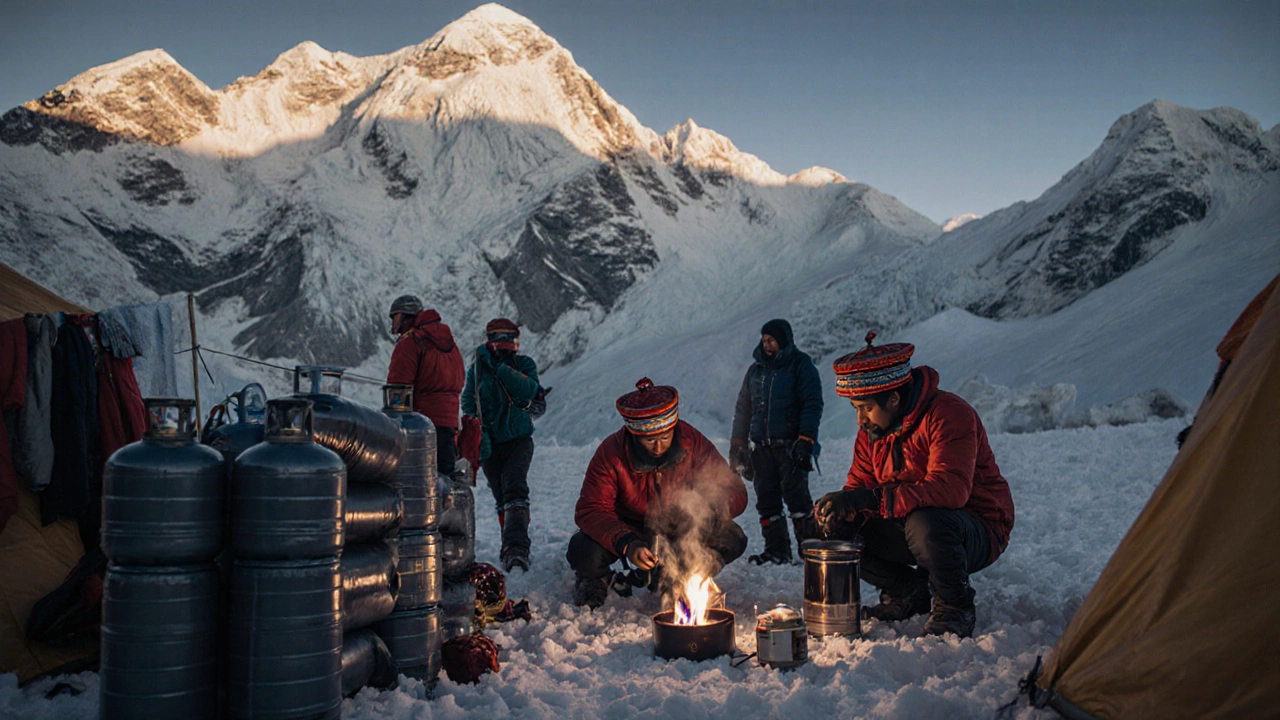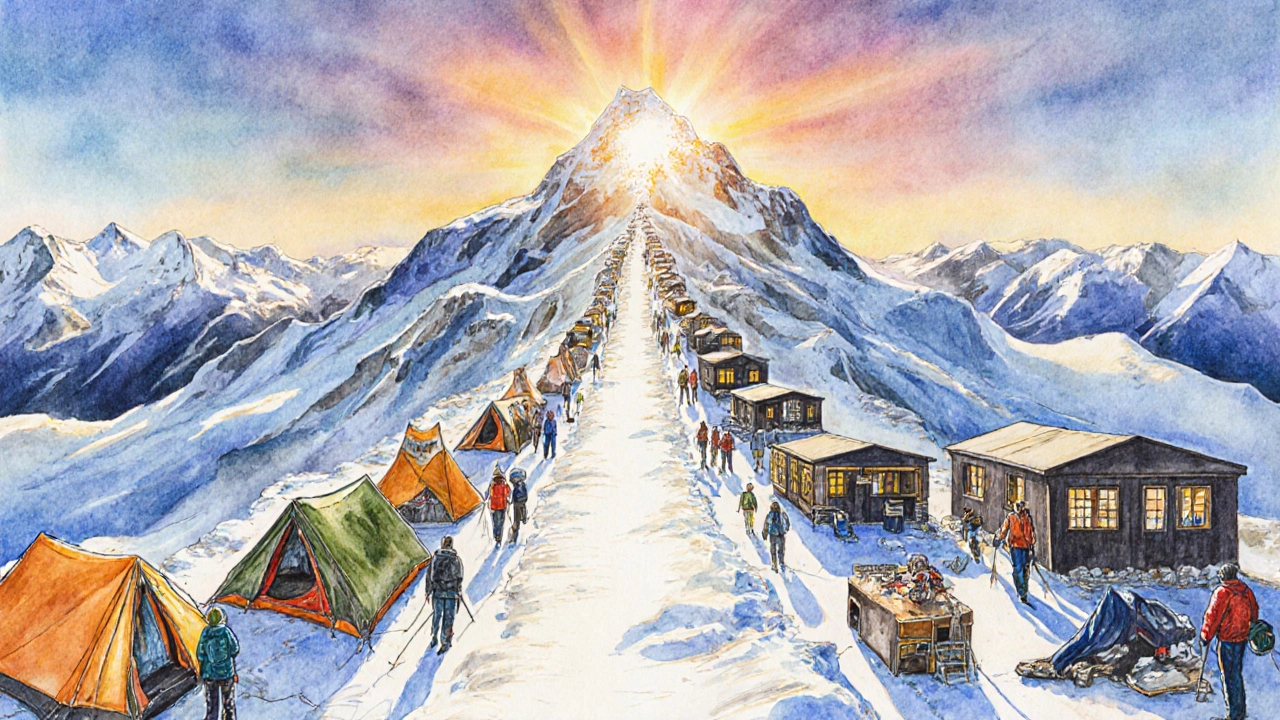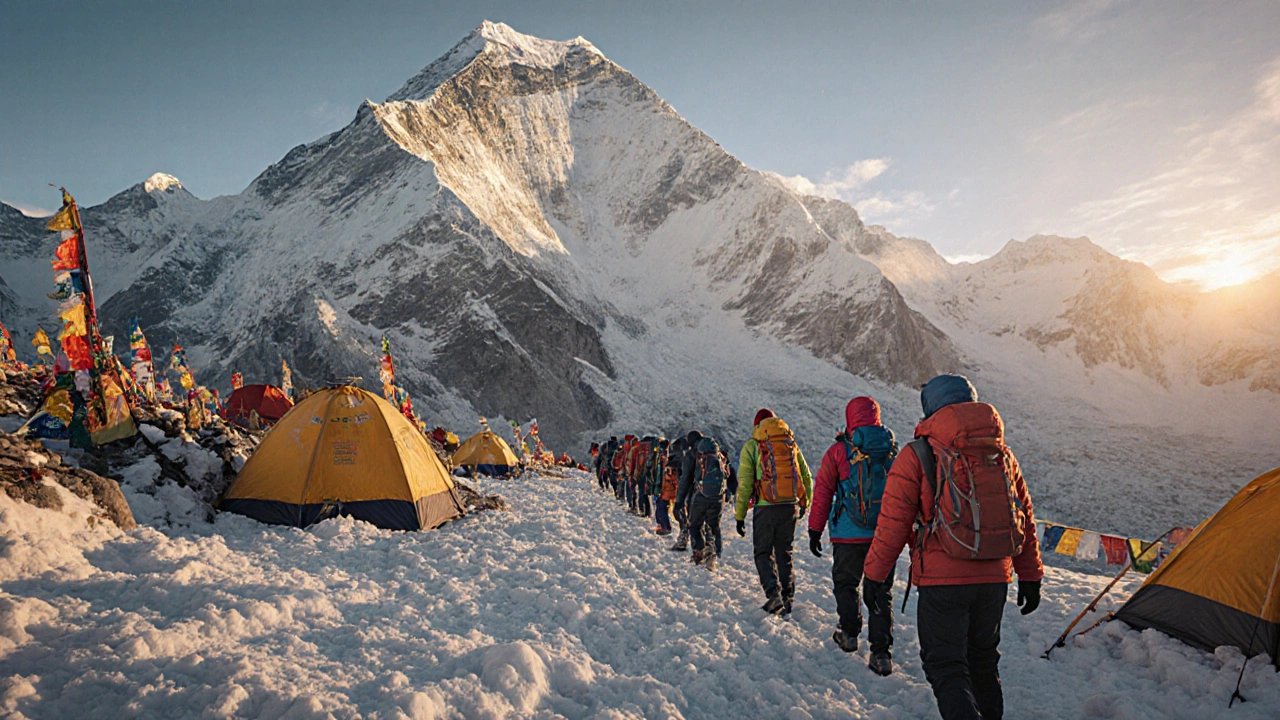Everest Trek Cost Calculator 2025
Estimate Your Everest Expedition Cost
Get a personalized cost estimate for your 2025 Mount Everest trek based on your preferences.
When you picture the world’s highest peak, Mount Everest is the 8,848‑meter summit straddling the border of Nepal and Tibet, known for its iconic challenges and breathtaking scenery. A full trek to the summit (or to Base Camp) pulls together permits, gear, guides, and weeks of high‑altitude trekking. If you’re wondering how much it really costs, let’s break it down.
What a "full" Everest trek actually includes
A "full" trek usually means the standard 60‑day expedition that covers approach to the Everest Base Camp, acclimatization climbs, summit push, and descent. It also covers:
- Round‑trip flights to Kathmandu (or Lhasa) and onward to the trailhead
- All necessary permits (Sagarmatha National Park, trekking, and summit permits)
- Professional Sherpa Guide and support staff
- High‑altitude equipment such as down suits, boots, and sleeping bags
- Meals, tea houses, and base‑camp mess facilities
- Emergency evacuation insurance and oxygen cylinders for the summit
Major cost components
Below is a quick snapshot of the main line items that make up the total price.
- Expedition Agency Fee: The core package from a reputable Expedition Agency. This covers logistics, staff salaries, and coordination.
- Permits & Government Fees: Includes the Permit for Sagarmatha National Park (around $30), a trekking permit (≈$25), and the coveted summit permit (≈$11,000 for foreign climbers).
- Gear Rental or Purchase: High‑Altitude Gear like insulated jackets, crampons, and oxygen masks can run $2,500‑$5,000 if you rent.
- Travel & Flights: International flights to Nepal or Tibet, plus domestic charter to Lukla (≈$200‑$400) or to the Tibet side (≈$250‑$350).
- Oxygen & Supplemental Supplies: Cylinders for the summit push are billed per 2‑hour canister, typically $350‑$500 each.
- Insurance: Comprehensive travel and high‑altitude evacuation coverage, usually $300‑$600.
- Personal Expenses: Tips, souvenirs, extra meals, and optional training pre‑expedition.
Typical price ranges in 2025
| Category | Agency Fee | Gear | Permits & Fees | Total Approx. |
|---|---|---|---|---|
| Budget | $7,500 | $2,000 | $12,000 | $21,500 |
| Mid‑range | $12,000 | $3,500 | $12,000 | $27,500 |
| Luxury | $22,000 | $5,500 | $12,000 | $39,500 |
These figures assume a standard 60‑day schedule and include all mandatory fees. Anything beyond the listed amounts is optional or a personal add‑on.

How to keep the Mount Everest trek cost under control
If the numbers feel steep, here are proven ways to shave off a few thousand dollars.
- Join a group expedition rather than a private one - staff costs are shared.
- Rent gear locally in Kathmandu instead of shipping from home.
- Choose the Nepal side; the Tibet route avoids some permit fees but adds expensive travel to Lhasa.
- Negotiate the oxygen package - many agencies offer bulk discounts.
- Handle your own visa and travel insurance to avoid agency mark‑ups.
Choosing the right expedition agency
Not every outfit is created equal. Use this checklist to vet potential partners.
- Safety record: Ask for the number of successful summits vs. incidents in the past three years.
- Staff qualifications: Guides should be certified Sherpas with high‑altitude experience.
- Transparency: A clear, itemized quote and a written cancellation policy are a must.
- Support infrastructure: Look for agencies that operate their own base‑camp mess and have reliable helicopter rescue agreements.
- Environmental policy: Agencies adhering to the Sagarmatha National Park waste‑management rules show better stewardship.
Permits, regulations, and extra fees
The Nepal government issues three core permits:
- Sagarmatha National Park Entry - $30 per person.
- Trekkers’ Information Management System (TIMS) Card - $25.
- Summit Permit - $11,000 (foreign climbers only). This fee funds conservation and search‑and‑rescue operations.
In Tibet, permits are bundled into a single travel‑agency fee that can range $6,000‑$8,000, but you’ll also need a Chinese visa and an additional $2,000 for the “Everest International” permit.

Hidden costs you might overlook
Even after you’ve added up the main line items, a few surprise expenses often pop up.
- Extra oxygen cylinders for emergency use - $400 each.
- Medical evacuation insurance - some policies charge a premium if you plan to climb above 7,000 m.
- Tips for staff - while optional, it’s customary to tip guides $200‑$300 and porters $150‑$200.
- Personal wear‑and‑tear - high‑altitude gloves or socks wear out quickly and may need replacement mid‑expedition.
Sample 60‑day itinerary and cost breakdown
To give you a realistic sense of where money flows, here’s a day‑by‑day snapshot of a mid‑range expedition.
| Day | Location | Key Activity | Cost |
|---|---|---|---|
| 1‑2 | Kathmandu | Arrive, gear check, permits | $150 |
| 3‑4 | Lukla | Acclimatization trek | $200 |
| 5‑12 | Base Camp region | Progressive climbs, rest days | $600 |
| 13‑20 | Khumbu Icefall & Camp I‑III | Technical sections, oxygen prep | $1,200 |
| 21‑30 | Camp IV‑South Col | Summit acclimatization | $1,800 |
| 31‑33 | Summit push | Reach 8,848 m, descent | $2,500 (oxygen, support) |
| 34‑40 | Descent to Base Camp | Recovery, celebrations | $400 |
| 41‑45 | Lukla → Kathmandu | Fly out, debrief | $300 |
| 46‑60 | Buffer / emergency days | Unplanned delays, extra rest | $400 |
Adding up the daily line items gives roughly $7,500 for food, accommodation, and support - the chunk that the agency fee often bundles into the overall quoted price.
Final thoughts on budgeting your Everest adventure
Climbing the world’s roof is a massive financial commitment, but with careful planning you can avoid surprise bills. Decide early whether you need a fully supported summit push or if the Base Camp experience meets your goals. Then match that decision to a reputable agency, lock in permits, and allocate a contingency fund for oxygen or extra gear. The numbers above give you a solid starting point for a 2025 expedition.
How much does a full Everest summit expedition cost in 2025?
A full summit trip typically ranges from $21,500 for a budget package to $39,500 for a luxury experience, with a mid‑range option around $27,500. The biggest single expense is the $11,000 summit permit for foreign climbers.
Are there cheaper ways to experience Everest without summiting?
Yes. A trek to Everest Base Camp alone costs $6,000‑$8,000, covering permits, basic gear, and guide fees. You skip the summit permit and oxygen, which cuts the price by roughly half.
Do I need to buy my own gear, or can I rent it?
Both options work. Renting in Kathmandu saves $1,000‑$2,000 versus buying, but buying lets you reuse gear for future climbs. Most climbers rent high‑altitude jackets, boots, and sleeping bags.
What insurance should I get for an Everest expedition?
Look for a policy that covers high‑altitude evacuation, medical treatment above 7,000 m, and loss of equipment. Premiums usually run $300‑$600 for the full trip.
Can I climb Everest from the Tibetan side, and is it cheaper?
The Tibetan route avoids the Nepalese summit permit but requires a Chinese travel agency fee of $6,000‑$8,000, plus a Chinese visa. Overall costs are similar, and logistics can be more complicated.
